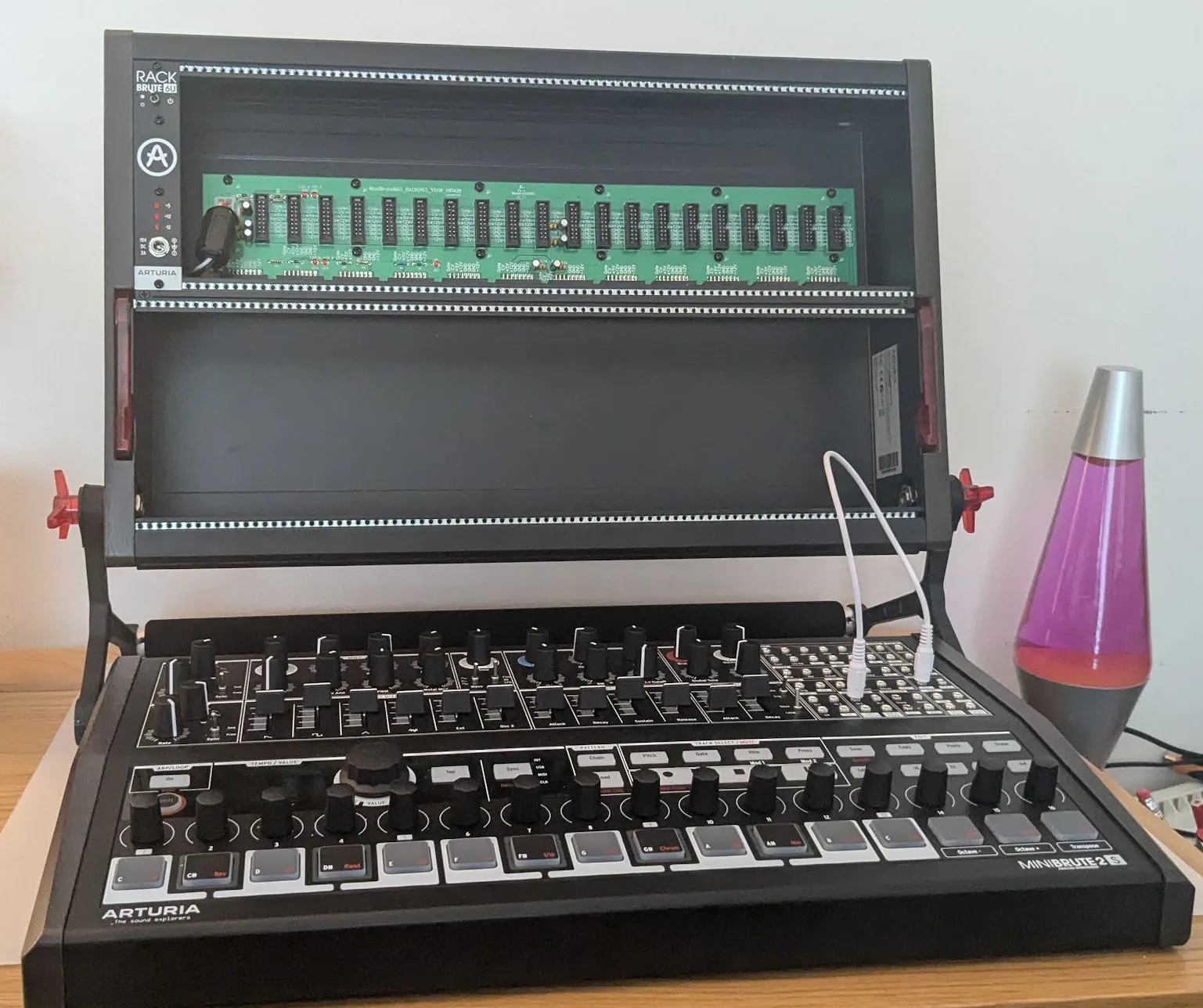“Imagine a traditional synthesizer broken down into its core components: oscillators that generate sound waves, filters that shape their tonal character, amplifiers that control their volume, envelopes that create dynamic changes, and so on. In a modular system, each of these functions resides in a separate module.”
Looking for more about DAWless?

An Introduction to Modular Synthesizers
In a world saturated with digital sounds and preset-laden instruments, there’s a corner of the music technology landscape that hums with a different kind of energy: the realm of modular synthesizers. These aren’t your typical keyboards with built-in voices. Instead, they’re sprawling ecosystems of individual electronic modules, each performing a specific function, waiting to be connected and sculpted into sonic wonders.
Imagine a traditional synthesizer broken down into its core components: oscillators that generate sound waves, filters that shape their tonal character, amplifiers that control their volume, envelopes that create dynamic changes, and so on. In a modular system, each of these functions resides in a separate module.
For the uninitiated, the sight of a modular synth – a colorful tapestry of knobs, jacks, and blinking LEDs connected by a web of patch cables – can be both intriguing and intimidating. But beneath the apparent complexity lies a world of unparalleled sonic exploration and creative freedom.
The magic happens when you start connecting these modules using patch cables. Want to modulate the filter cutoff with an LFO (Low-Frequency Oscillator)? Simply plug an output from the LFO module into the filter’s cutoff frequency input. Want to trigger an envelope with a sequencer? Patch the sequencer’s gate output to the envelope’s trigger input.
This interconnectedness is the heart and soul of modular synthesis. It allows you to create signal paths and sonic interactions that are simply impossible with fixed-architecture synthesizers.

Semi-Modular
Not ready for Modular? Semi-Modular might just be the gateway drug you need.
Why Go Modular? The Allure of the Patch Cable
So, why would anyone choose to delve into this seemingly complex world? Here are some compelling reasons:
Unparalleled Sonic Flexibility:
Modular synths offer an almost limitless palette of sounds. By combining different modules and routing signals in unique ways, you can create sounds that are entirely your own, ranging from delicate drones to earth-shattering basses and intricate textures.
Deep Understanding of Synthesis:
Working with individual modules forces you to understand the fundamental building blocks of sound. You’ll gain a profound appreciation for how oscillators, filters, envelopes, and other components interact to create the sounds you hear.
Customizing Creativity
The tactile nature of patching cables and tweaking knobs fosters a deeply engaging and intuitive creative process. It’s a very physical way of interacting with sound, encouraging experimentation and happy accidents.
You can build a modular system tailored precisely to your sonic needs and interests. Start with a few core modules and gradually expand your setup with specialized units as your exploration deepens.
A Thriving Community:
The modular synth world is a vibrant and supportive community of musicians, sound designers, and enthusiasts who share their knowledge, creations, and passion for sonic exploration.
Is Modular Synthesis Right for You?
While the allure of modular is strong, it’s important to consider if it aligns with your musical goals and resources. Here are a few things to keep in mind:
- Cost: Building a modular system can be a significant investment. Individual modules can range in price, and a fully featured system can easily cost several thousand pounds.
- Learning Curve: While the basic concepts are straightforward, mastering the intricacies of different modules and patching techniques takes time and dedication.
- Space and Power: Modular systems require physical space for the case and modules, as well as a reliable power supply.
- No Presets: Unlike traditional synthesizers, modular systems don’t typically have presets. Every sound you create is a unique patch that needs to be documented or recreated.